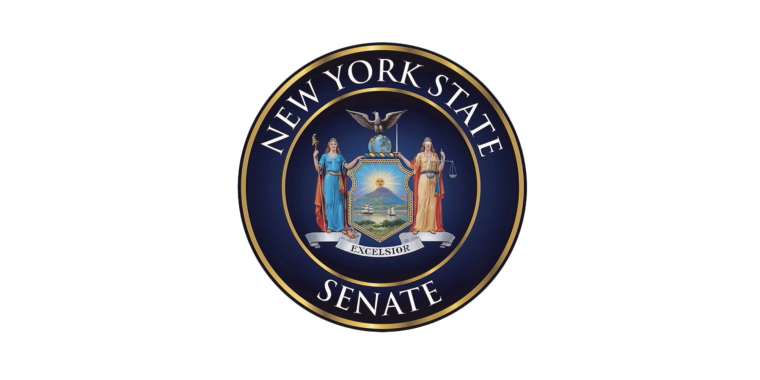
Statement from Senator Liz Krueger On Governor Hochul's SOTS Proposal Addressing Hedge Fund Home Ownership
January 9, 2025

New York City – Senator Liz Krueger, sponsor of the End Hedge Fund Control of New York Homes Act, released the following statement today regarding Governor Kathy Hochul's State of the State proposal to restrict home ownership by hedge funds and private equity firms:
"I am pleased to see Governor Hochul moving to address this critical issue. Hedge funds and private equity are driving up the cost of housing in New York by swooping in like vultures to buy up and hoard homes across the state. This is a critical affordability issue, which is why last year I introduced the End Hedge Fund Control of New York Homes Act with Assembly Member Solages. We must ensure we get this policy right, and I look forward to seeing the details of the governor's proposal and working with her and my legislative colleagues to advance this important policy and help ease the affordability burden for New Yorkers buying homes.”
"I am pleased to see Governor Hochul moving to address this critical issue. Hedge funds and private equity are driving up the cost of housing in New York by swooping in like vultures to buy up and hoard homes across the state. This is a critical affordability issue, which is why last year I introduced the End Hedge Fund Control of New York Homes Act with Assembly Member Solages. We must ensure we get this policy right, and I look forward to seeing the details of the governor's proposal and working with her and my legislative colleagues to advance this important policy and help ease the affordability burden for New Yorkers buying homes.”
###
BACKGROUND:
Large scale hedge fund investors are taking over the housing market at an alarming and accelerating rate. In 2011, no single entity owned over 1,000 single-family rental units. As of June 2022, the Urban Institute estimated that large hedge funds and other institutional investors owned roughly 574,000 single-family homes. Data from the first three months of 2023 showed this trend continuing, with hedge funds purchasing 27 percent of single-family homes.
Predatory hedge funds disproportionately target Black families and vulnerable single parents, as revealed in a House Financial Services Committee report in 2022. The report found these investors focus on neighborhoods with larger Black populations and approximately 30% more single mothers than the national average. Additionally, studies show that hedge funds are 68% more likely than small landlords to file for evictions and often impose high rent increases, inflated fees, and deteriorating housing conditions to maximize profits.
The End Hedge Fund Control of New York Homes Act (S.9096/A.8829), introduced in April of 2024, would impose a 50% tax on the fair market value of any future purchase of single-family residence (defined as 1- to 4-family dwellings) by hedge funds and similar managed funds, and require hedge funds to reduce their holdings of single-family homes by 10% per year over 10 years or face significant tax penalties. The money raised through these taxes would be deposited in a Housing Down Payment Trust Fund, which would be used by NY State Homes and Community Renewal (HCR) to create a grant program to help New York families buy homes.
The taxes would apply to any managed fund that pools assets from investors, or funds that pool other such managed funds, with at least $50 million in assets under management in a given year. This would include hedge funds, private equity funds, real estate investment funds, real estate funds, and others. Non-profits or entities primarily engaged in the construction or rehabilitation of single-family residences would not be covered.
Covered funds would have to pay a tax for purchasing certain single-family residences equal to 50% of the fair market value of the property. In addition, the funds would have to pay a $50,000 tax for every single-family home they continue to own above a maximum permissible number. The maximum permissible number would be calculated based on the difference between the the number of homes owned by a fund on the last day of the year in which the bill becomes law and a percentage of that number that will decline to zero over time.
For example, if a fund owns 1,000 covered single-family homes on December 31st of the first year the bill goes into effect, then its maximum permissible number in the second year will be 90% of that, or 900. So if the fund continues to own 1,000 homes at the end of that year, it will owe $5 million (100 x $50,000). In the following year, the maximum permissible number will be 80% of 1,000, or 800. So if the fund continued to hold a balance of 1,000 homes, it would owe $10 million (200 x $50,000). The percentage continues to decline by ten points each year until it reaches zero, after which point funds would be liable for a $50,000 tax on every covered single-family residence they own. However, if the fund in this example owned 900 homes in the second year and 800 homes in the third year, etc, they would not have any liability.
In order to incentivize selling residences to New Yorkers who want to buy homes, funds can only lower their tax liability by selling primary residences. If a covered residence is sold during the year to another business or to a private individual that already has a primary residence, that is considered a disqualified sale, and that home would be counted as being owned by the fund for the purpose of calculating their end-of-year liability.
All the revenue collected through these taxes would be deposited in the Housing Down Payment Trust Fund. This Fund would be used by HCR to provide grants to state housing finance agencies that provide down payment assistance to families purchasing homes within the state. These agencies must give priority to families seeking assistance to purchase any single-family residence from a fund covered by the new taxes.
Single-family residences covered by the taxes would include any residential property with one to four dwellings unless it is unoccupied or acquired through foreclosure, is not currently being rented or leased, is the primary home of one of the investors in the fund, or was constructed, acquired, or operated with Federal appropriated funding sources.
Large scale hedge fund investors are taking over the housing market at an alarming and accelerating rate. In 2011, no single entity owned over 1,000 single-family rental units. As of June 2022, the Urban Institute estimated that large hedge funds and other institutional investors owned roughly 574,000 single-family homes. Data from the first three months of 2023 showed this trend continuing, with hedge funds purchasing 27 percent of single-family homes.
Predatory hedge funds disproportionately target Black families and vulnerable single parents, as revealed in a House Financial Services Committee report in 2022. The report found these investors focus on neighborhoods with larger Black populations and approximately 30% more single mothers than the national average. Additionally, studies show that hedge funds are 68% more likely than small landlords to file for evictions and often impose high rent increases, inflated fees, and deteriorating housing conditions to maximize profits.
The End Hedge Fund Control of New York Homes Act (S.9096/A.8829), introduced in April of 2024, would impose a 50% tax on the fair market value of any future purchase of single-family residence (defined as 1- to 4-family dwellings) by hedge funds and similar managed funds, and require hedge funds to reduce their holdings of single-family homes by 10% per year over 10 years or face significant tax penalties. The money raised through these taxes would be deposited in a Housing Down Payment Trust Fund, which would be used by NY State Homes and Community Renewal (HCR) to create a grant program to help New York families buy homes.
The taxes would apply to any managed fund that pools assets from investors, or funds that pool other such managed funds, with at least $50 million in assets under management in a given year. This would include hedge funds, private equity funds, real estate investment funds, real estate funds, and others. Non-profits or entities primarily engaged in the construction or rehabilitation of single-family residences would not be covered.
Covered funds would have to pay a tax for purchasing certain single-family residences equal to 50% of the fair market value of the property. In addition, the funds would have to pay a $50,000 tax for every single-family home they continue to own above a maximum permissible number. The maximum permissible number would be calculated based on the difference between the the number of homes owned by a fund on the last day of the year in which the bill becomes law and a percentage of that number that will decline to zero over time.
For example, if a fund owns 1,000 covered single-family homes on December 31st of the first year the bill goes into effect, then its maximum permissible number in the second year will be 90% of that, or 900. So if the fund continues to own 1,000 homes at the end of that year, it will owe $5 million (100 x $50,000). In the following year, the maximum permissible number will be 80% of 1,000, or 800. So if the fund continued to hold a balance of 1,000 homes, it would owe $10 million (200 x $50,000). The percentage continues to decline by ten points each year until it reaches zero, after which point funds would be liable for a $50,000 tax on every covered single-family residence they own. However, if the fund in this example owned 900 homes in the second year and 800 homes in the third year, etc, they would not have any liability.
In order to incentivize selling residences to New Yorkers who want to buy homes, funds can only lower their tax liability by selling primary residences. If a covered residence is sold during the year to another business or to a private individual that already has a primary residence, that is considered a disqualified sale, and that home would be counted as being owned by the fund for the purpose of calculating their end-of-year liability.
All the revenue collected through these taxes would be deposited in the Housing Down Payment Trust Fund. This Fund would be used by HCR to provide grants to state housing finance agencies that provide down payment assistance to families purchasing homes within the state. These agencies must give priority to families seeking assistance to purchase any single-family residence from a fund covered by the new taxes.
Single-family residences covered by the taxes would include any residential property with one to four dwellings unless it is unoccupied or acquired through foreclosure, is not currently being rented or leased, is the primary home of one of the investors in the fund, or was constructed, acquired, or operated with Federal appropriated funding sources.
related legislation
Share this Article or Press Release
Newsroom
Go to NewsroomInformation from NYC Dept. of Health on Ebola
October 24, 2014
New York Magazine: The War Over Airbnb Gets Personal
October 3, 2014
Sen. Krueger in the Daily News: "The evidence is in, so ban fracking"
September 3, 2014
Sen. Krueger's Community Bulletin: August 2014
August 19, 2014